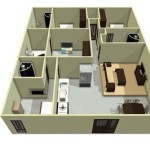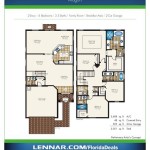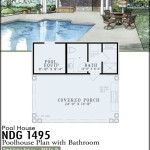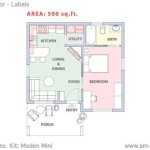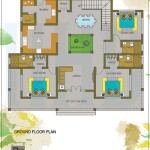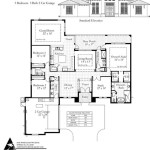Famous Modern Architects House Plans: Exploring Iconic Designs
Modern architecture, characterized by its emphasis on functionality, clean lines, and open spaces, continues to inspire homeowners and architects alike. Exploring house plans from renowned modern architects offers valuable insights into the principles and aesthetics of this influential movement. This article examines several notable architects and the distinctive features of their residential designs.
Frank Lloyd Wright: Integrating Architecture with Nature
Frank Lloyd Wright, a pioneer of organic architecture, sought to harmonize buildings with their natural surroundings. His Prairie School houses, characterized by horizontal lines, low-pitched roofs, and open floor plans, exemplify this philosophy. Key elements of Wright's designs include:
- Emphasis on horizontal lines mirroring the prairie landscape.
- Use of natural materials such as wood, stone, and brick.
- Integration of indoor and outdoor spaces through the use of terraces and large windows.
- Open floor plans promoting a sense of spaciousness and flow.
- Clerestory windows maximizing natural light.
Ludwig Mies van der Rohe: "Less is More"
Ludwig Mies van der Rohe, a champion of minimalist design, is known for his "less is more" philosophy. His iconic Barcelona Pavilion and Farnsworth House showcase his commitment to simplicity and the honest expression of materials. Key characteristics of Mies van der Rohe's residential work include:
- Use of steel and glass to create open, transparent spaces.
- Minimalist detailing and ornamentation.
- Emphasis on structural clarity and the honest expression of materials.
- Open floor plans that blur the boundaries between interior and exterior.
Le Corbusier: The Five Points of Architecture
Le Corbusier, a highly influential figure in modern architecture, developed "The Five Points of Architecture," a set of principles that revolutionized building design. These principles, evident in his Villa Savoye and other residential projects, include:
- Pilotis (support columns) raising the building off the ground.
- Roof gardens providing usable outdoor space.
- Free plan allowing for flexible interior layouts.
- Ribbon windows maximizing natural light and offering panoramic views.
- Free façade, independent of the structural frame.
Walter Gropius: Bauhaus Functionality
Walter Gropius, the founder of the Bauhaus school, advocated for functional and affordable housing. His designs emphasized practicality, simplicity, and the use of industrial materials. Key aspects of Gropius's residential architecture include:
- Emphasis on functionality and practicality.
- Use of prefabricated elements and industrial materials.
- Simple, geometric forms and clean lines.
- Open floor plans and large windows.
Richard Neutra: California Modernism
Richard Neutra, a prominent figure in California Modernism, is known for his integration of indoor and outdoor living spaces. His Kaufmann Desert House and Lovell Health House exemplify his sensitivity to the natural environment. Key characteristics of Neutra's work include:
- Emphasis on the relationship between the built environment and nature.
- Use of glass walls to blur the boundaries between indoor and outdoor spaces.
- Integration of natural materials such as wood and stone.
- Open floor plans and flexible living spaces.
Alvar Aalto: Human-Centered Design
Alvar Aalto, a Finnish architect and designer, is renowned for his human-centered approach to design. His buildings are characterized by their use of natural materials, organic forms, and attention to detail. Key elements of Aalto's architectural style include:
- Emphasis on natural light and ventilation.
- Use of natural materials such as wood and brick.
- Organic forms and curved lines.
- Attention to detail and craftsmanship.
- Consideration of the human scale and experience.
Eero Saarinen: Sculpting with Concrete
Eero Saarinen, known for his expressive and sculptural forms, pushed the boundaries of modern architecture. His TWA Flight Center and Gateway Arch exemplify his innovative use of concrete and his dramatic, sweeping lines. Key features of Saarinen's architectural style include:
- Exploration of new materials and construction techniques.
- Sculptural forms and dramatic curves.
- Emphasis on the integration of structure and form.
- Use of concrete as a primary building material.
Studying the house plans of these influential architects offers valuable insights into the diverse expressions of modernism and its enduring legacy in contemporary residential architecture. Their innovative approaches to design continue to inspire and inform the creation of functional, aesthetically pleasing, and environmentally conscious homes.

Most Popular Modern House Plan Home Floor Archit Woodstone Architecture Plans

Modern House Plan Villa G By Ng Architects Architectural Design Plans Architect

House With Zero Stairs By Przemek Kaczkowski And Ola Targonska L Shaped Plans Architectural Floor

The Most Famous Modern House Houseplans Blog Com

Top 50 Modern House Designs Ever Built Architecture Beast

Amazing S House By Ko Plus Architects Modern Design Contemporary

10 Mid Century Modern Homes By Famous Architects To Inspire You Inspirations Essential Home

Top 50 Modern House Designs Ever Built Architecture Beast

Dg House Domb Architects Drawing Plans Floor Plan Design

Modern House Plan With Swimming Pool Two Y Plans Blueprints And Dwg File Autocad Files

